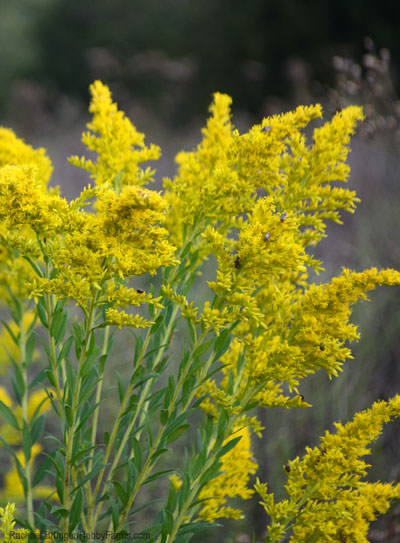
 Photo by Rachael Brugger Landowners can encourage native plants on their properties to serve as habitat and food for beneficial insects, birds and other wildlife. |
Native plants in many parts of the U.S. are struggling because of changes in land use and climate, posing problems for the wildlife species that depend on them for sustenance and sanctuary. To combat this, USDA’s Natural Resources Conservation Service is working with private landowners to promote native plants on their land for conservation plantings such as in field borders, buffers and other planted areas.
“Native plants provide food and shelter for wildlife, and most importantly, their structure allows for better survival rates. Native warm season grasses tend to create bunches of vegetation and leave open ground between them providing breeding room and an escape from predators,” says Jason Keenan, wildlife biologist for NRCS in Mississippi.
Native plants—those that have grown in a particular area since before human settlement—provide food and habitat for native wildlife. Fewer native plants often lead to decreasing populations of native wildlife. For example, the Southeast is home to a suite of grassland birds facing population peril, such as quail, grasshopper sparrows, lark bunting, eastern meadowlarks, dickcissels, Henslow’s sparrows and loggerhead shrikes. The decrease of these birds is attributed to the loss of their natural grassland habitat.
These birds are like the “canary in the coalmine,” serving as indicators of ecosystem health. If bird populations are declining, it signals other environmental issues.
The ecosystem benefits from native plants to stabilize soil, filter water, purify air and support wildlife. Using native plants on sites they are best adapted to can have significant benefits to mitigating environmental stresses, such as extreme temperatures and drought, to retain productive lands for both agriculture and wildlife.
Wildlife is also a lively part of U.S. culture.
“Many people grow up, sit outside and listen to the birds,” says Kyle Brazil, agricultural policy coordinator for the National Bobwhite Conservation Initiative and liaison to USDA’s Farm Service Agency. “Especially with quail, people want to hear that whistle, and it’s amazing how excited they get when they hear it.”
In addition to environmental and ecological benefits, the work of NRCS and private landowners generates outdoor recreation and economic activity, benefitting local communities and landowners. Disappearing habitats can stifle these economic benefits.
By incorporating native plants into conservation practices, landowners can achieve their primary resource concern and provide wildlife habitat. For example, using native grasses in filter strips reduces nutrient runoff and provides habitat for several species of wildlife.
Native plants can be used in several conservation practices or planted in your home garden. Small changes in native vegetation can cause a disproportionate positive return on wildlife, so every little bit helps, Brazil says.
For more information on selecting the right plants for your land, contact your local USDA service center or visit the NRCS website for resources on using plants for natural resource conservation.




